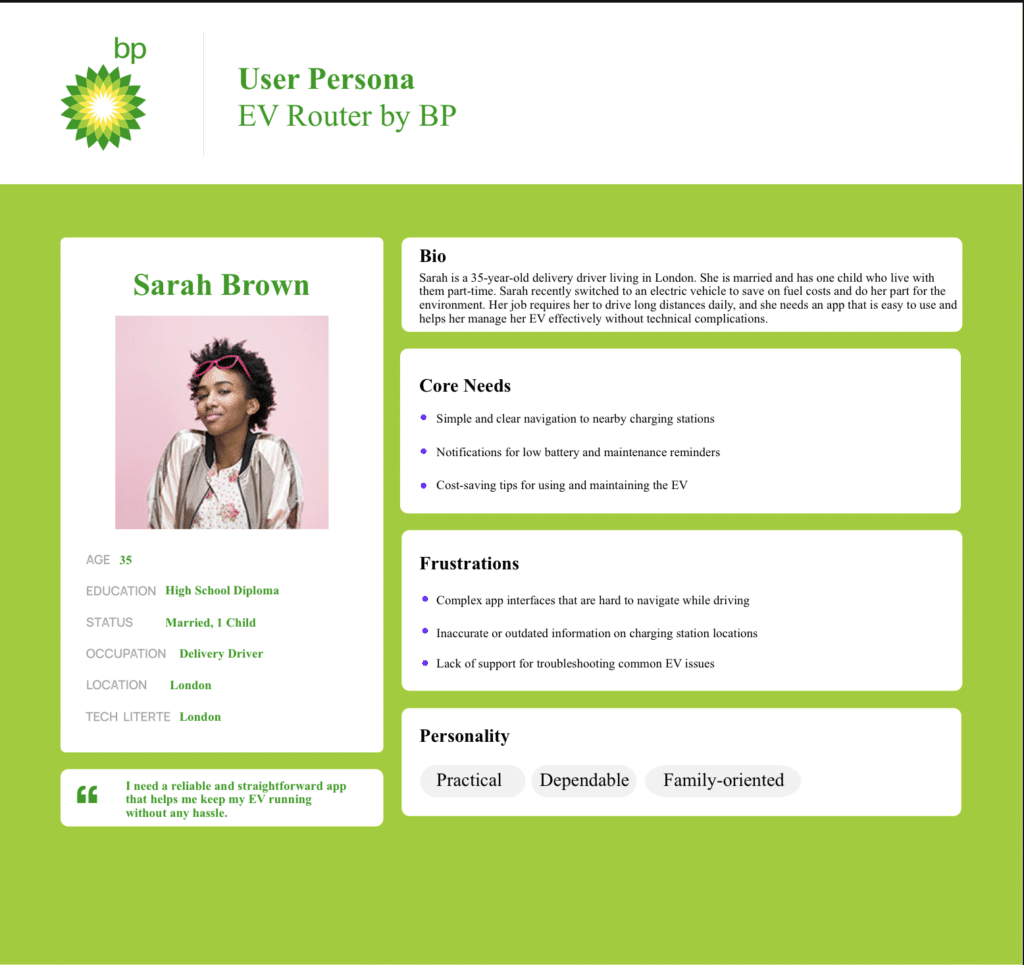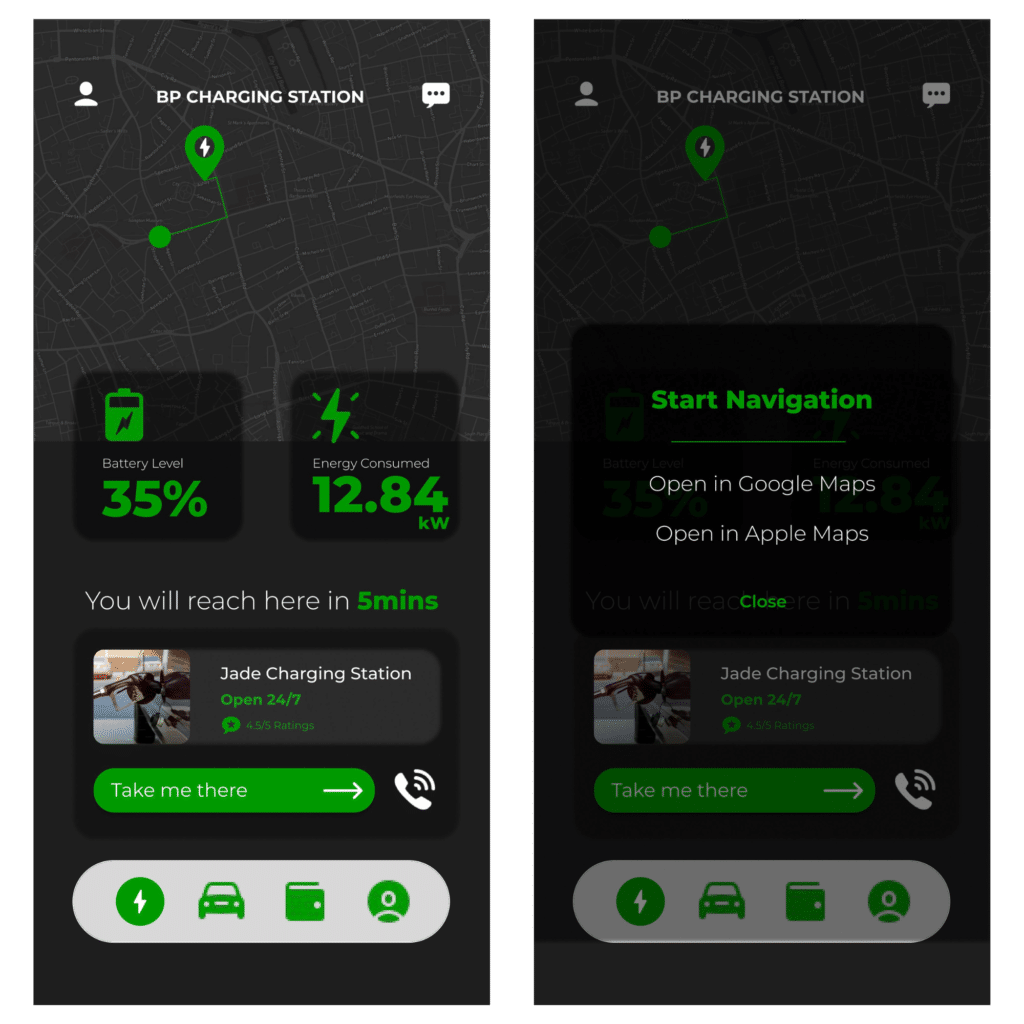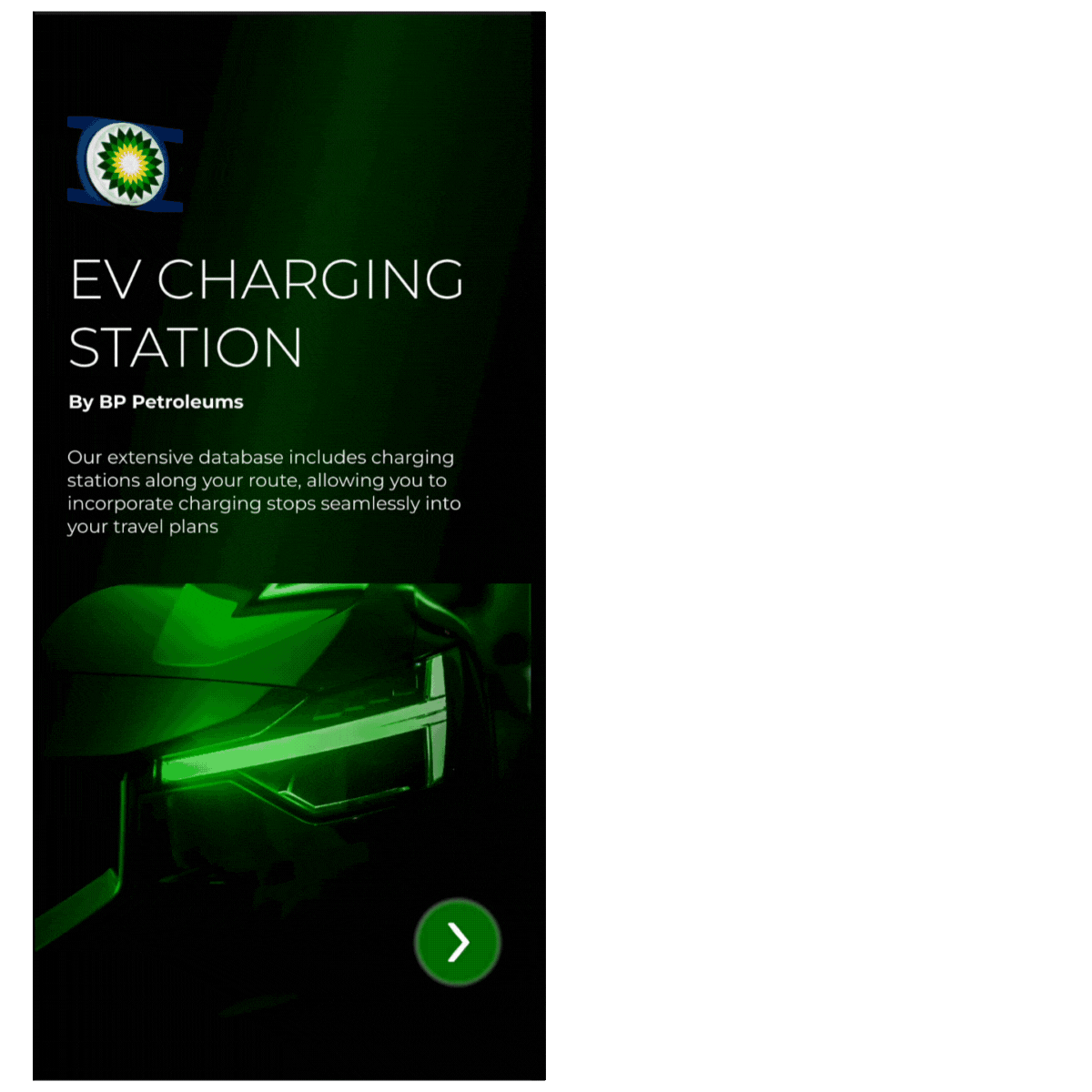Project Overview
As part of the bp Digital Design & UX Job Simulation Project, I undertook a comprehensive job simulation focused on developing a mobile app for the electric vehicle industry. This simulation provided a valuable opportunity to understand the dynamics of working on a Digital Design team at bp, allowing me to apply my skills in a practical, real-world context.
In this project, I took on the role of a Lead UX/UI Designer with responsibilities that included:
Electric vehicle (EV) owners often face challenges in finding charging stations, monitoring charging progress, and planning efficient routes that accommodate their charging needs. The goal was to develop an app that addresses these pain points, enhancing the overall experience for EV owners.
The target users are EV owners, primarily aged 25-45, who are mid tech-savvy and environmentally conscious. They seek a seamless, user-friendly solution for managing their vehicle’s charging needs and planning journeys efficiently.
To ensure the app met user needs, I conducted thorough research which included:
These research activities provided a solid foundation for the design process.

The design process was methodical and iterative, encompassing several stages:


Charging Station Locator: An interactive map that allows users to find nearby charging stations with real-time availability updates.
Charging Progress Monitor: A feature that lets users monitor the charging status of their vehicle remotely.
Route Planner: A tool that helps users plan their trips by identifying optimal routes with accessible charging stations along the way.
Station Details: User can get complete details of the selected charging station, and call them if required.



Throughout the project, I encountered several challenges:
To overcome these challenges, I employed empathy and critical thinking, focusing on user-centered design principles to create intuitive and practical solutions.
The project culminated in a functional and visually appealing app prototype that significantly enhanced the user experience for EV owners. Key outcomes included:
This experience was invaluable in honing a range of skills essential for a successful career in UX/UI design:
Participating in bp’s job simulation project confirmed my passion for working on complex design projects and provided a solid foundation for pursuing a career in digital design. The hands-on experience of researching, designing, and prototyping an app for the electric vehicle industry was both challenging and rewarding.
This project not only demonstrated my ability to enhance user experiences through thoughtful design but also highlighted my commitment to continuous learning and improvement in the field of UX/UI design. I am excited to apply these skills and contribute to innovative design solutions in the future.
© 2024 Created by Abdul Moiz Qadir